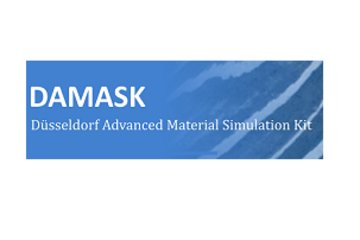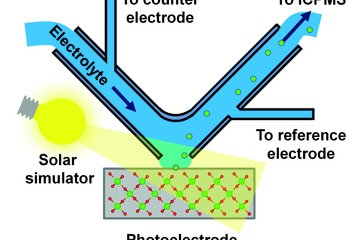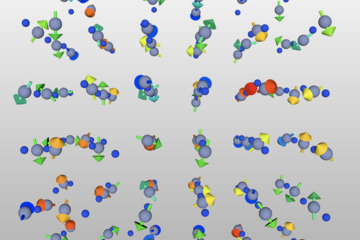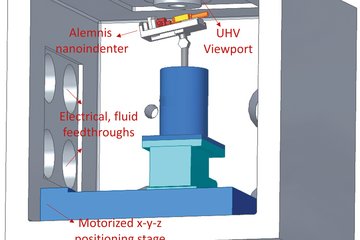All genres
181.
Talk
Combining Structural and Chemical Information on the nm Scale by Correlative TEM and APT Characterization. Euromat 2013, Sevilla, Spain (2013)
182.
Talk
Nanostructuring of bulk steels. International Conference on Computational Modeling of Nanostructured Materials - ICCMNM 2013, Frankfurt Institute for Advanced Studies, Frankfurt a. M., Germany (2013)
183.
Talk
Characterization of Cu2ZnSnSe4 thin-film solar cells. Euromat 2013, Sevilla, Spain (2013)
184.
Talk
Atomic-scale insights into thin-film solar cells by Atom Probe Tomography. Korean German Forum on Nanotechnology, Düsseldorf, Germany (2013)
185.
Talk
Multi-scale characterization of advanced structural steels: from the micro to the atomic-scale. 8th Pacific Rim International Congress on Advanced Materials and Processing (PRICM-8), Waikoloa, Hawai, USA (2013)
186.
Talk
Combining Structural and Chemical Information on the nm Scale by Correlative TEM and APT Characterization. Microscopy and Microanalysis 2013, Indianapolis, IN, USA (2013)
187.
Talk
Atomic Scale Understanding of 6.8 GPa Ultra-high Strength Pearlite. 8th Pacific Rim International Congress on Advanced Materials and Processing (PRICM-8), Waikoloa, HI, USA (2013)
188.
Talk
Internal interfaces in Cu(In,Ga)Se₂ thin-film solar cells. 1st IDSC workshop, Düsseldorf, Germany (2013)
189.
Talk
High strength and ductile low density steels: Simplex and Kappa. Symposium on Adventures in the Physical Metallurgy of Steels, Cambridge, UK (2013)
190.
Talk
Nanostructures in 1 Billon Tons: Interface Engineering in Complex Steels and Biological Nanocomposites. Materialwissenschaftliches Kolloquium, Universität Hamburg-Harburg, Hamburg, Germany (2013)
191.
Talk
Iron – Mythology and High Tech: From Electronic Understanding to Bulk Nanostructuring of 1 Billion Tons. Summer School 2013 on Functional Solids – FERRUM - organized by Leibniz University Hannover, Goslar, Germany (2013)
192.
Talk
Nanostructuring 1 Billion Tons: Combining Rapid Alloy Prototyping, Multiscale Models, and Characterization for Advanced Manufacturing. 2nd World Congress on Integrated Computational Materials Engineering, Salt Lake City, UT, USA (2013)
193.
Talk
Characterization of internal interfaces in Cu(In,Ga)Se2 thin-film solar cells using correlative microscopy. IEEE – Photovoltaic Specialist Conference, Denver, CO, USA (2013)
194.
Talk
From defectant theory to nanoscale transformations in steels. Workshop on 'Current Challenges in Materials Physics' at Physics Faculty, University Göttingen, Göttingen, Germany (2013)
195.
Talk
Nanoscale phase transformations at martensite interfaces. International Colloquium on Advanced Materials Simulation, Interdisciplinary Centre for Advanced Materials Simulation (ICAMS), Bochum, Germany (2013)
196.
Talk
Atom probe tomography study of kappa carbide precipitation in light-weight austenitic Fe–Mn–Al–C steels. SFB 761 Industrieberaterkreis, RWTH Aachen, Aachen, Germany (2013)
197.
Talk
Exploring the internal interfaces in Cu(In,Ga)Se2 thin-film solar cells at the atomic-scale. 2013 MRS Spring Meeting & Exhibit, San Francisco, CA, USA (2013)
198.
Talk
Scale-hoping approaches in desiging complex alloys. Royal Society International Seminar, Superalloys to Order' at the Kavli Royal Society International Centre, Chicheley, UK (2013)
199.
Talk
Design of nanostructured bulk steels. Colloquium lecture at University of Bremen, Bremen, Germany (2013)
200.
Talk
Transformations in Steels. German-Chinese High-level Workshop on “Microstructure-driven Design and Performance of Advanced Metals”, Institute of Metals Research (IMR) of the Chinese Academy of Science (CAS), Shenyang, China (2013)











